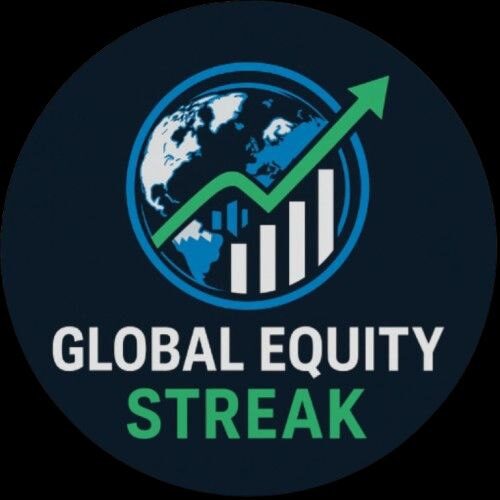Jefferies View On Trump’s Second term:In this detailed analysis, former Fed economist and Jefferies strategist David Zervos shares insights on the growing concerns around the politicization of U.S. jobs data under the Trump administration, the rapid pace of trade deals with global partners, and why markets are shifting their focus from trade tensions to monetary policy. With constant data revisions, questions about institutional credibility, and the looming impact of Trump’s economic reforms, this blog breaks down what’s really driving market sentiment in 2025.
Jefferies View On Trump’s Second term
In an illuminating Interview, market strategist and former Fed economist David Zervos shed light on a growing concern: the politicization of economic data and its implications for market confidence. As the Trump administration navigates trade negotiations and continues reshaping the Federal bureaucracy, the debate around the credibility of U.S. labor data and the real catalysts driving the markets is gaining new urgency.
Are U.S. Jobs Data Politicized?
During the segment, Reporter raised a question that’s been echoed in financial circles for months—why does the jobs data seem more volatile now than in the past? David Zervos acknowledged this perception and suggested that it’s not just a statistical quirk but potentially rooted in deeper systemic issues.
He emphasized that while jobs data should ideally remain apolitical, the role of political appointees—who must be Senate-confirmed—opens the door to bias. Particularly under Trump’s administrations (both terms), there’s been a strong undercurrent of mistrust toward the so-called “swamp,” with several positions being reshuffled to align with the administration’s broader vision.
Zervos pointed out that previous incidents, such as Janet Yellen’s perceived hesitancy to raise rates ahead of the 2016 election, contribute to an ongoing narrative that data and Fed decisions can be subtly swayed by politics. While these biases may not be overt, they reinforce suspicions about data integrity. He also noted that constant revisions to labor numbers suggest either a failure of the system or poor performance—either of which may justify institutional change.
The Market Implication of Questionable Data
The concern is not just academic. Zervos highlighted how the integrity of economic data underpins market decisions. If hiring a statistician becomes a political interview—“Did you see a stronger September jobs report? Great, you’re hired”—confidence in data erodes.
This erosion could have cascading effects. Traders, investors, and policymakers who rely on clean, reliable numbers might begin discounting or second-guessing official releases. That could introduce more volatility into markets that are already skittish about inflation, interest rates, and geopolitical uncertainty.
As economist Mohamed El-Erian recently tweeted, the solution may not be a political purge but rather a comprehensive upgrade in data collection capabilities. Investing in better statistical methods and giving professionals the tools and autonomy they need may restore confidence without politicizing the process further.
Trade Deals: Another Chapter in the “Art of the Deal”
Shifting to another potential market mover, Zervos analyzed Trump’s fast-paced approach to securing trade deals. According to him, nearly 70% of key trade agreements have been “inked”—not finalized, but progressing quickly, with Europe and Japan among those involved.
Zervos described this approach as classic “Art of the Deal”: initiate chaos, force stakeholders to the negotiating table, and extract favorable concessions by leveraging America’s economic dominance. The strategy hinged on the idea that America’s trading partners had more to lose. So far, this high-risk bet appears to be working, with nations returning to negotiations—even Switzerland, where tariffs initially approached 40%.

But while these deals generated significant market reactions earlier in the year, Zervos believes the momentum is fading. The market now understands Trump’s method and has grown desensitized to his aggressive negotiation style. As a result, trade talks are unlikely to deliver the same kind of shock or excitement going forward.
What Will Drive Markets Now?
According to Zervos, the real drivers of the market from here are no longer trade deals but monetary policy and domestic fiscal changes. In particular, he pointed to the potential September rate cut, noting that such a move—if politically motivated—could reignite debates around the independence of the Federal Reserve.
Moreover, Trump’s “one big beautiful bill,” which includes a mixture of tax cuts and spending programs, could soon start making waves in the financial world. If the bill delivers tangible economic growth or consumer stimulus, markets might respond positively—but again, much depends on execution and credibility.
Final Thoughts
Zervos’ key takeaway is both cautionary and insightful. The integrity of economic data, the real intent behind policy decisions, and the public perception of independence in institutions like the Fed all play crucial roles in shaping investor behavior. As politics and economics become increasingly intertwined, the markets are learning to read between the lines—no longer reacting reflexively to headlines, but watching for deeper signals behind the numbers.
In this evolving landscape, trust in institutions and the accuracy of data may become just as important as actual policy moves. The Trump administration may continue to disrupt, but whether that disruption leads to long-term market growth or systemic fatigue will depend on how well America balances politics with professionalism.
Disclaimer:
The content presented in this blog is for informational and educational purposes only. It reflects the views and interpretations of public interviews and expert commentary and should not be considered as financial, investment, or political advice. Readers are encouraged to conduct their own research and consult with qualified professionals before making any financial or policy-related decisions. The blog does not represent the views of any government agency, financial institution, or media network.

